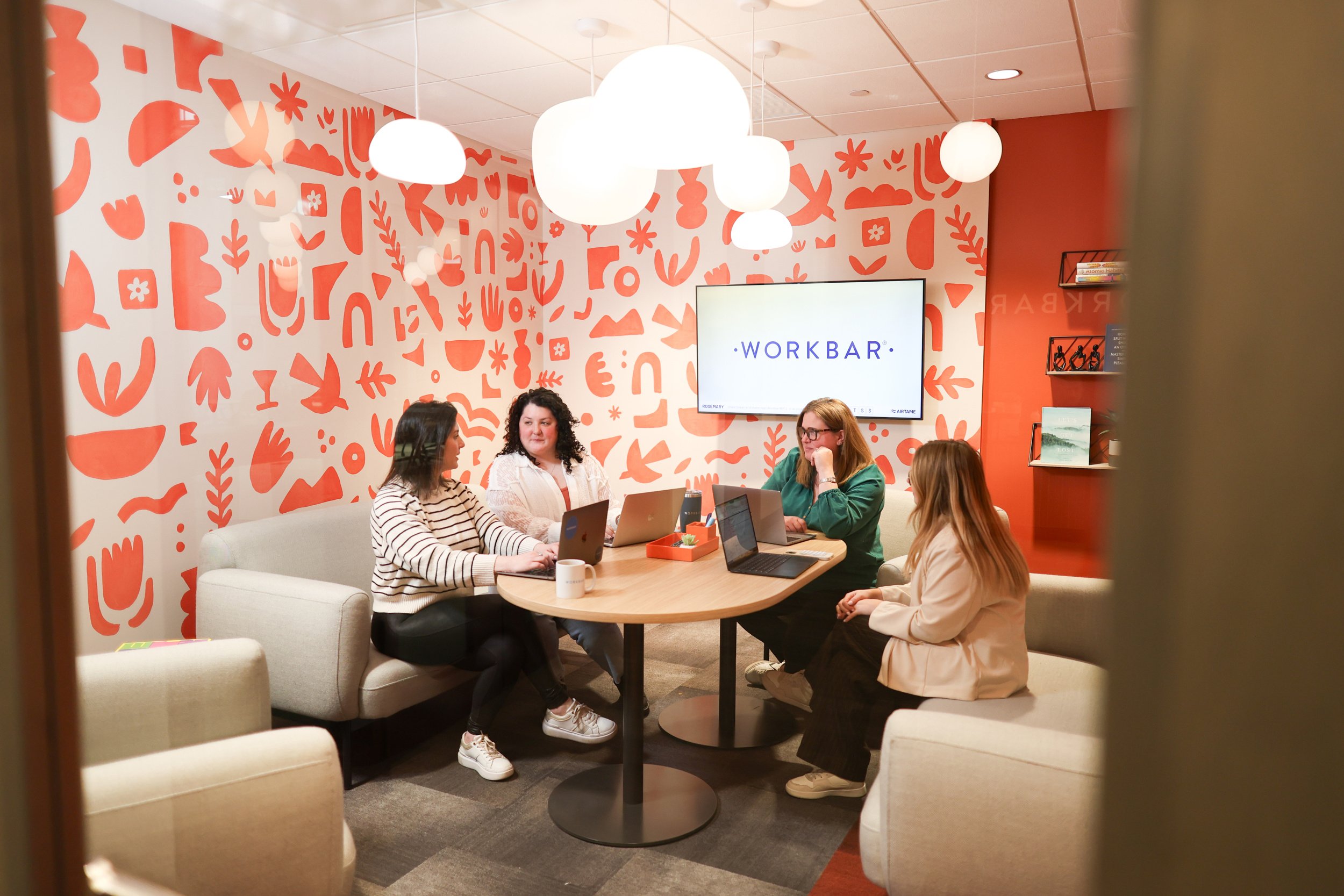Flexible Work Trend Predictions for 2025

As we gear up for the new year, it's the perfect time to dive into the trends that are shaking up how, where, and why people work. With a front-row seat to how companies are rethinking office space, we’re seeing patterns emerge—and they’re shaping what’s coming next in coworking and real estate. For the second year in a row, we’ve teamed up to tell you what we think is on the horizon for 2025.
1. Coworking Goes Hyperlocal
We saw the shift to suburban coworking coming back in 2015 when we opened our first location outside the city. Now, the rest of the world is catching on. Productivity and connection can be found closer to home—especially if you’re in Massachusetts, where there’s a Workbar within 20 minutes of nearly everyone.
Professionals are rethinking their time, ditching long commutes for spaces that offer the perks of a traditional office—without the hassle. Suburban coworking hubs are set to thrive as they meet the needs of workers who value flexibility, convenience, and proximity.
2. Larger Companies Ditch HQs for Coworking
We’re seeing an increasing number of large companies trading their headquarters for coworking memberships, giving employees the flexibility to work where it makes the most sense for them. Take Allstate, for example—they made headlines earlier this year when they gave up their HQ in favor of coworking spaces.
Why? Flexibility. Companies need to stay agile, especially in unpredictable times. Coworking offers a scalable, cost-efficient solution that removes the burden of long-term leases while still providing the collaborative environments teams need. It’s a win-win for companies and their people. At Workbar, we’re rolling out a new program of coworking solutions for teams to meet this demand.
We’ve noticed a clear trend, company size often determines office attendance. Small to mid-size companies tend to remain flexible about the number of in-office days, while larger organizations are increasingly moving toward a 3-5 day in-office schedule.
3. Flexibility Reigns Supreme
In an era where businesses age in dog years, temporary offices and on-demand products are becoming the norm. Companies will continue to produce more with fewer people and whether it’s pop-up project spaces or memberships that allow employees to drop into a coworking space when needed, companies are prioritizing flexibility over fixed assets.
This trend is about more than just convenience—it’s survival. Agile models allow companies to scale up or down without locking into space they may not need six months—or even six weeks—from now. An employee’s day is nuanced, and where they choose to work should be thoughtfully aligned with their needs and priorities for that specific day.
4. Real Estate Meets Hospitality
The future of office space is about more than square footage—it’s about the experience. Landlords and property managers are transforming into service providers, creating workplaces that feel more like boutique hotels than traditional offices.
Think curated events, tech-enabled operations, and tenant-first ecosystems. Harvard’s recent study on loneliness in the workplace showed that fostering connection is critical—and it doesn’t happen by installing a golf simulator. Instead, it’s about creating inclusive experiences, like networking events, wellness programs, and community-building initiatives. We’ll see a shift away from superficial, "check-the-box" amenities toward thoughtfully designed experiences that truly engage employees and earn the commute.
5. Smarter Spaces Through Tech
From IoT-powered workstations to apps that manage everything from desk bookings to air quality, technology is transforming coworking spaces. It’s not just about efficiency—it’s about creating environments that are intuitive and personal.
Imagine opening an app to see where your coworkers are for the day or how busy a particular workspace is before heading in. Smart sensors can optimize space usage, while data from tools like Bevi machines (did you know Boston and California are leading in off-hours use?) can inform decisions about design and resource allocation. The future of workspaces is smarter, more connected, and built to adapt to how people actually use them.
6. Work-Life Integration Redefined
At Workbar, we’ve always believed work and life shouldn’t compete—they should complement each other (side note: that’s the meaning behind our name). That’s why our spaces are designed for different tasks people perform throughout the day. People aren’t one size fits all and office space shouldn’t be either.
Workspaces are moving beyond function to focus on holistic well-being. From on-site childcare and fitness amenities to partnerships with local businesses, coworking spaces are becoming lifestyle hubs. People want spaces that reflect their values, support their mental and physical health, and foster meaningful connections.
7. Sustainability Becomes Essential
Sustainability is no longer a bonus—it’s a must. From energy-efficient buildings to eco-friendly materials and practices, coworking operators are making sustainability a priority.
Consumers and businesses alike are demanding transparency and environmental responsibility. As coworking companies strive to meet these expectations, we’re seeing more operators aim for B Corp certification and WELL certification—just like we did as the first coworking company in the world to achieve WELL certification.
In Conclusion…..
What does this mean for the leaders on the front lines, trying to support a workforce spanning five generations, diverse neurodivergent needs, and a mix of extroverts, introverts, and everyone in between?
It means one thing: there’s no one-size-fits-all solution.
So why lock your team into a one-size-fits-all office space for the next 5-10 years? Instead, empower your employees with a purpose-driven network of spaces—places where they can be productive, feel connected, and find joy and inspiration in how and where they work. And please, let’s retire “RTO” and “Mandates” from our vocabulary. Solutions exist that actually work for how people want to work.
.jpg?width=352&name=125A8554%20(1).jpg)

